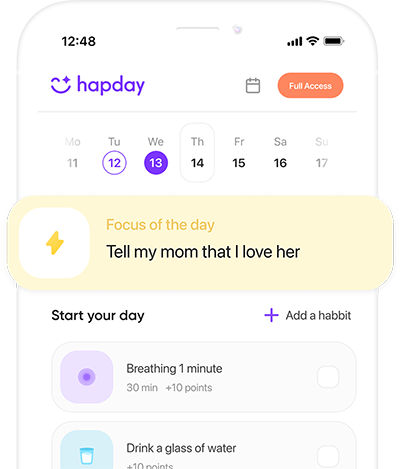Alright, motivation. It’s such a big word—always thrown around but often slippery to pin down. That drive pushing us to chase dreams, tackle hurdles, and find happiness? Many of us, maybe too often, are puzzled about how to tap into it consistently, right? Especially in this whirlwind age of endless choices and distractions. And hey, if you’re a Gen Z or Millennial woman, the challenge might feel doubled. Grab a seat, maybe a coffee too, because we’re diving deep into understanding motivation and unearthing strategies to keep that fire alive—revealed through a mix of academic insights and some good ol’ fashioned wisdom.
Table of Contents
- Understanding Motivation
- The Science Behind Staying Motivated
- Key Strategies to Stay Inspired
- Overcoming Common Motivation Barriers
- The Role of Technology
- Conclusion
- References
Understanding Motivation
So, what’s motivation, really? It’s essentially this process kicking off, steering, and sustaining those goal-craving behaviors of ours. It’s this cocktail of emotions, thinking patterns, and biology that nudges how we operate. Remember that work by Ryan and Deci from back in 2000? They split motivation into two flavors: intrinsic and extrinsic. Intrinsic—this comes from your core, the pure joy in doing something. Extrinsic? We’re talking incentives like cash, pats on the back, or maybe just some good recognition.
The Science Behind Staying Motivated
Here’s a nugget from the science vault: researchers have unraveled fascinating bits about how motivation dances around in our brains. Flashback to 2016—a piece in Neuron dug into dopamine’s role. Yep, the brain’s little feel-good messenger. Turns out, more dopamine equals more motivation (who would’ve thought?). This implies brain chemistry plays a hefty role in our drive to stay motivated (Tricomi et al., 2016). Boost your dopamine, boost your motivation—it’s like discovering a cheat code, right?
Key Strategies to Stay Inspired
1. Set Clear Goals
Okay, first up—goal-setting. Ever try hitting a target you can’t see? Nope, doesn’t work. According to Locke and Latham (2002), we rock higher performance when our goals are crystal clear and a tad challenging. SMART goals are your best friend here: Specific, Measurable, Achievable, Relevant, Time-bound. Jotting things down like this not only outlines the “what” but shines a spotlight on the “how.”
2. Find Your Intrinsic Motivation
Chasing what genuinely sparks your interest is foundational. Intrinsic motivation hangs in there longer than its extrinsic cousin because it clicks with what truly matters to you. It might be a side hustle, that passion project, or that dream career that keeps getting shoved under the rug. Align with your heartstrings, and the motivation is organic.
3. Build a Supportive Environment
Ever notice how certain folks just light you up? Cultivate a circle that cheers you on. Social scaffolding? Yes, please. A 2018 look in the Journal of Personality and Social Psychology revealed those tight-knit bonds. They’re like superpowers in disguise for achieving goals (Feeney & Collins, 2018).
4. Embrace Failure as a Learning Opportunity
Who here fears failure? Thought so. But reframe it—failures might just be stepping stones to success. Carol Dweck (2006) delved into this idea of growth mindset; seeing abilities as things to be honed instead of stagnant traits was key—basically, grit and learning from oopsies is golden.
5. Celebrate Small Wins
Tiny celebrations, anyone? Recognizing those minisuccesses fuels motivation like nothing else! Whether it’s a cheat meal for staying on track with health goals or a night off for reaching a work milestone, those little celebrations keep the momentum going. We all love a treat now and then.
6. Mindfulness and Meditation
Oh, the power of a clear mind! Mindfulness and meditation aren’t just buzzwords. A study in Psychological Science from 2014 spilled the beans—these practices help sharpen focus, ease stress, and, yup, boost motivation (Mrazek et al., 2013).
Overcoming Common Motivation Barriers
Motivation’s arch-nemeses—procrastination, burnouts, and self-doubts. Here’s some quick ammo for these baddies:
- Procrastination: Break tasks into bites you can chew—think of the Pomodoro Technique.
- Burnout: Make self-care non-negotiable. Breaks should be your mini-vacations to recharge.
- Self-doubt: Positive affirmations can do wonders. Build that confidence slowly, and soon, you’ll face big tasks like a boss.
The Role of Technology
Ah, technology—a blessing and a curse. Yeah, social media can derail focus quicker than you can type it, but productivity apps and online tribes can lift you too. Enter apps like Hapday—a nifty tool offering goal-setting and habit-tracking to keep you on the give-it-all track.
Conclusion
Motivation isn’t a one-size-fits-all—it’s a blend of inner desires and the world’s nudges. But by peeling back the layers—setting sharp goals, leaning into intrinsic motivation, and wrapping up with a cheer team—it’s possible to fuel that long-lasting inspiration. Every accomplishment, no matter its size, deserves a nod. Your journey is, after all, just that—uniquely yours.
Feeling ready to up your motivation game? Discover the tools tailored just for your journey with Hapday. Embrace what you’re capable of today!
References
- Ryan, R. M., & Deci, E. L. (2000). Self-determination theory and the facilitation of intrinsic motivation, social development, and well-being. American Psychologist, 55(1), 68.
- Tricomi, E., Delgado, M. R., & Fiez, J. A. (2016). Modulation of caudate nucleus activity by action contingency. Neuron, 51(5), 633-642.
- Locke, E. A., & Latham, G. P. (2002). Building a practically useful theory of goal setting and task motivation: A 35-year odyssey. American Psychologist, 57(9), 705.
- Feeney, B. C., & Collins, N. L. (2018). A new look at social support: A theoretical perspective on thriving through relationships. Personality and Social Psychology Review, 19(2), 113-147.
- Dweck, C. S. (2006). Mindset: The New Psychology of Success. Random House.
- Mrazek, M. D., Franklin, M. S., Phillips, D. T., Baird, B., & Schooler,

